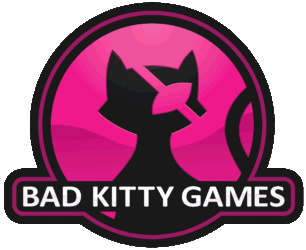Welcome back, Conash here to give another big talk about whatever game design thing has been on my mind lately! This one may seem a bit out of the blue to many of you, but I’m sure that both testers and time travels will probably have an idea about why this is on my mind recently. For the rest of you all I have to say is you might have something to look forward to in the 0.44 release in a couple of months!
So, I hope that most of you here are familiar enough with turn based RPGs like Pokemon, Final Fantasy, or this really obscure game called ‘Collect Harems’ or something to be able to understand the idea of having a certain number of things you can do in the time that enemies get their own limit of things they can do. Now I may only have personal experience to go off of, but I wanted to talk about the value of ‘actions’ as a whole, and what you have to be careful about when you ‘give’ an action and when you ‘take away’ an action as well as why not all actions are equal.
To start with, I think it’s important to mention that to me there seems to be 3 types of actions which a player can take while in ‘combat’ of some form, actions which influence ‘Damage Output’ like doing damage or buffing themselves to do more damage, ‘Damage Mitigation’ either by reducing total damage taken or making sure the damage/status effects are inflicted in a way that’s less detrimental to you, or ‘Recovery’ which is putting in effort to actively undo either damage or some other detrimental effect on you. While I can certainly see arguments that these might seem rather arbitrary, this distinction typically gets at the heart of the philosophy behind things as while choosing to have Therese use Martydom then guard is different than having Meline try to daze all your enemies both of these actions are done because you expect the damage that they’ll prevent to outweigh the damage you could have done instead if you brought Kyrie or Yamamaya instead, as you value the chance of wasting time and resources that have the fight be longer that is unneeded to prevent having to put in the resource investment that ‘Recovering’ from what might have happened would have been. Understanding this decision making process and what goes into it is fundamental when trying to give players options as if you make an easy to use ‘Recovery’ option that’s more potent than a ‘Mitigation’ option, then people will never use the ‘Mitigation’ option as it’s unsure if it’ll be useful but you do know that you can output more damage which is progress and if the bad thing happens anyways you can recovery for a similar price.
On a related note, I do believe that this decision making process applies to all games, as say a racing game would exchange the ‘Damage Output’ with instead getting farther in the race, maybe when you stay in last place until the end to have the computers rubber-band in your favor before you overtake them to ‘Mitigate’ the damage they’d do if you were in 1st the whole way through. Granted some game types don’t always have an in-built way to ‘recover’ but every game calls for the players to make decisions and take actions and the player will have to constantly assess their situation and come to a decision one way or another, regardless as to if the game waits for them or not. Though it is important to remember human limitations, even if players are entirely familiar with the situation the speed at which they have to understand their situation, remember their options, and come to a conclusion plays a big role in how much you can ‘expect’ from them, but turn-based games give players a lot of room to make decisions should they choose to make use of it, but enough of this little tangent!
Right, back to the original topic, the value of an action. The value of a single action is going to be relative to any given situation, for example if both the player and enemy has 2 actions per turn and you take away 1 of them you’ve removed 50% of the damage/healing/mitigation that either side can do, but when there’s 4 actions per turn and you take one away you remove 25% of what they can accomplish per turn. That bit is pretty simple (and deals a lot with why I’m not the biggest fan of how we have several accessories that give extra actions as those are numerically the strongest accessories in the game, giving 25-50% more damage/healing/mitigation), but it’s also important to remember that two actions even if similar aren’t always the same as I briefly touched on earlier. See if you have two identical characters except one has a 10% higher chance of getting a critical hit (which in Harem Collector means x3 damage), then that person’s attacks are on average 20% more valuable than the other character (because 10% of the time you will do 300% damage instead of 100%, meaning +200% damage every 1/10 attacks), anyone who’s overcome the third bonus boss should be familiar with this sort of concept as I went out of my way to make sure that you could not win if all your actions only had an ‘average’ output. Honestly a lot of this stuff just really gets down to math at the end of the day.
See, you may not realize it but just about everyone is crunching a lot of internal math when they play HC. I for example may go on a whole lot about how bringing Meline to inflict daze (a -60% hit chance on physical attacks that lasts for 3 turns, an average of -60% physical damage for up to 3 turns per use) helps a lot more than using Magic Missile at least early game (a 30% chance to deny the enemy 1 turn, an average of -30% damage every turn it’s used), and I came to realize this not just through theoretical number crunching but from experience when I noticed how often I didn’t get hit by an enemy that was dazed. That said, players who aren’t as interested in these numbers are usually more focused on how they only have 4 party members so bringing Meline would limit their options for the party as a whole. The players who spam attack to win? They’ve determined the time and effort to think of more complex tactics doesn’t have enough of a reward to it. This might not seem like quite as relevant, but it is actually very important when evaluating the worth of any given action, the perceived value a player’s options are.
Let’s have a little thought experiment here. Let’s say that you had a character with 2 spells that cost the same amount of MP, the first spell does twice as much damage as the second one in all cases except one fight near the end, where the second is 4x as effective. If you don’t go out of your way to hit your players over the head with this knowledge, they will expect that one fight to follow the unspoken ‘rule’ you had for the rest of the game where the first spell is stronger, and so most of them will have a harder time with the fight. See, players learn to associate a value with all their various options as they see how effective guarding is when they’re hit by a powerful attack, vs how effective it is when the attack targets someone else, or how much consistently enemies get deafened when you use sonic magic and so they decide how often to use it. You’ve gotta keep this in mind when you introduce new options to players because if you give them a new option that seems weaker, or the same but more expensive, if it doesn’t give them the same rewarding feeling as their existing set of skills then they won’t choose it even when it’s 10% better than their existing options because it’s not worth the brain power to access that memory, to make that connection, you’re exhausted from your jackass boss chewing you out for their mistake so who cares if you are only reaching 91% of your potential in this video game, you’re still stopping the evil overlord! Make sure to keep that in mind as you try to give players more ‘options’ so that they can make each action more distinct, if you give them too many choices or they aren’t as good as others they’ll probably forget them.
That’s about it… Sorry if things weren’t very clear, I’ve been having a hard time trying to string all the ideas in my head in a way that flows together for these more introspective blog posts. Hopefully there was enough meat to each of these ideas here that even if some of the connections about them are more vague or missing you can still make sense of this week’s bunch of nonsense!

